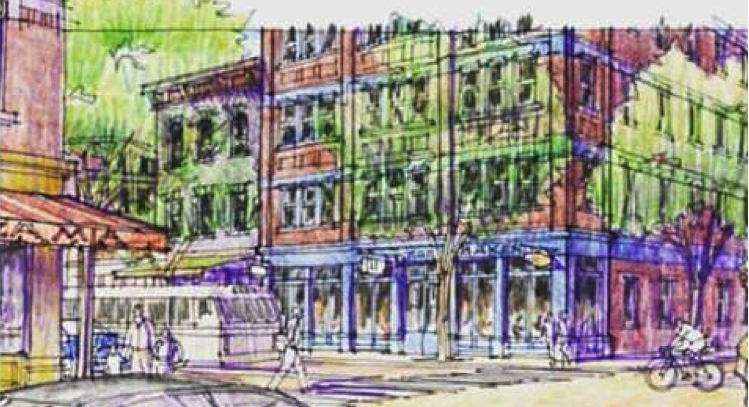
News
Developing under a form-based code
By Sean Doyle, June 9, 2018
 Form-Based Codes Institute at Smart Growth America. Local public officials and developers discussed how this design-based approach to zoning has affected their ability to build good projects while improving overall community character.
Form-Based Codes Institute at Smart Growth America. Local public officials and developers discussed how this design-based approach to zoning has affected their ability to build good projects while improving overall community character.
You can also access a PDF version of the slides from the presentation here.
Answers to your questions
Given the time limitations, we were unable to answer all of the questions live. But here are the answers to the questions we didn’t get to (and some thoughts on some that we did answer):
- Do form-based codes (FBCs) support NIMBYism or discriminate against housing options for a diverse range of household incomes?
A form-based code should, and typically does, promote a wide range of housing options, including some that are affordable by design, many of which may not be permitted under conventional, density-based zoning that often limits unit and/or house sizes. Affordability is a market force; the code in-and-of-itself won’t create or promote NIMBYism. Form-based codes create attractive places where people want to live, work and visit. Because there is a shortage of these kinds of places, the market tends to value them highly. In order to enable people at all income levels to enjoy the benefits of these highly valued places, localities must proactively adopt policies and programs that ensure this diversity is retained. In some instances, an FBC can support these policies, for example by allowing developers to increase density in exchange for affordable units. But a zoning code, on it's own, can not ensure income diversity. - What are you getting consensus on in public workshops/meetings?
Form-based codes don’t work well unless they are implementing the community’s vision. A public participation charrette process is used to determine what kind of place a community wants to be. During the community engagement process, the code writer discusses, in general terms, the form of the places the citizens want: what is the street like, how tall are the buildings, what sort of activities are happening here? These concrete desires then become the foundation of the form standards, written by the code writers. - Does a form-based code eliminate lot requirements?
Lot requirements under form-based codes differ from conventional codes. Rather than FAR or set-back requirements, FBCs tend to have "build-to" lines, maximum lot coverage requirements, standards for building placement along the street and block size parameters. - What is a "stronger" form-based code as referenced by one of the presenters?
A strong form-based code is one that is based on a community vision, includes a regulating plan that clearly indicates which standards apply to which corridors and/or districts, and is transparent about what is and is not governed by the code. - What is a "permeable surface"?
A permeable surface allows water to percolate through to the ground below, minimizing run-off. For example, pierced pavers or gravel is permeable. Concrete and asphalt are not. - Is it better to have a district/neighborhood with an FBC developed by a single developer versus multiple private developers/land owners?
Modern form-based codes were originally drafted for communities with a single master developer, like in Seaside, FL or Kentlands, MD. Today, however, new FBCs for large-scale planned communities are relatively rare and most FBCs are written for corridors, districts, and neighborhoods targeted for infill or redevelopment. A few examples of this type of code include Columbia Pike in Arlington, VA and the downtowns of Nashville, TN and Del Ray Beach, FL. The important prerequisite in any community interested adopting a form-based code is that there be a clear vision for future development or redevelopment so that the code can be written to achieve that vision.
Related News

1350 I St NW Suite 425 Washington, DC 20005
[email protected]© 2026 Smart Growth America. All rights reserved
Site By3Lane Marketing









